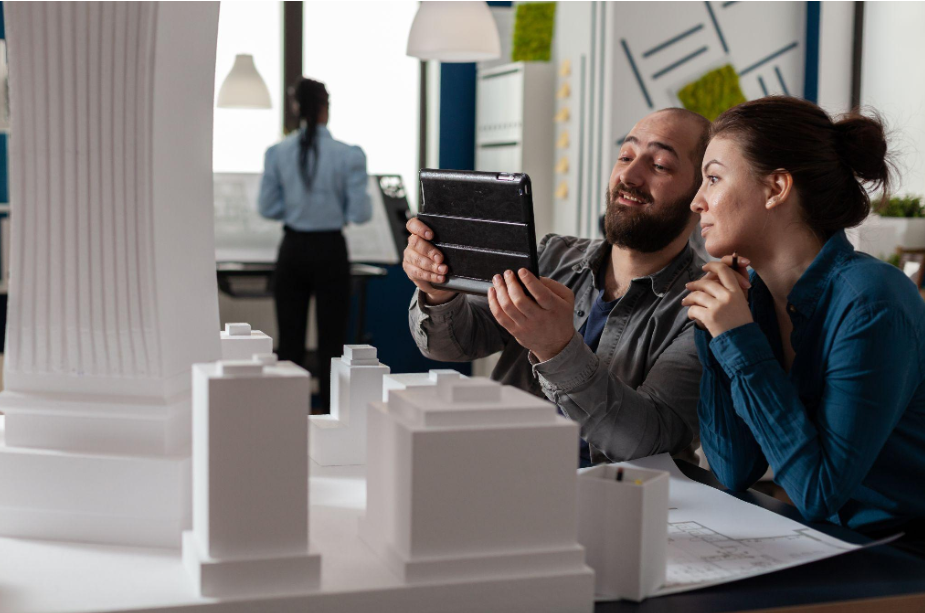Ever walked into a place and instantly felt better? Maybe it was the sunlight streaming through big windows or the cozy layout that felt just right. Now flip that. Ever been in a space so badly arranged it made you want to escape like a contestant on a reality show?
That’s the psychology of space, and for tenants, it’s no joke.
Design goes beyond pretty furniture. It messes with the mind in powerful ways. And for landlords and property managers, understanding that connection is a secret weapon in keeping tenants happy and keeping them put.
Let’s break it down.
First, Meet Your Tenant’s Brain
Humans are wired to respond to their surroundings. Our brains love certain shapes, colors, and layouts. Mess with that, and you mess with their mood.
Here’s what the science says:
- Natural light boosts mood and productivity by 40%, according to a study from Northwestern Medicine.
- Ceiling height affects creativity. Higher ceilings = higher thinking. Literally.
- Cluttered spaces spike cortisol (a.k.a. the stress hormone).
This stuff matters. Happy tenants renew leases. Unhappy ones scroll Zillow while eating cereal.
Color Me Comfy (Or Anxious)
Colors can make or break the vibe. You think you’re choosing a paint color. What you’re really choosing is an emotional reaction.
- Blue is calm. Good for bedrooms or shared lounges.
- Yellow energizes. Works for kitchens or common areas.
- Red? That’s a spicy meatball. Best used sparingly.
Pro tip: avoid the all-white prison look. It screams “dentist’s waiting room,” not “home sweet home.”
Property managers, here’s where you shine. When you guide landlords toward better paint choices, you’re not just helping aesthetics; you’re influencing lease longevity.
Layout: The Unsung Hero
Open floor plans are all the rage… until you try to watch TV while your roommate is making a smoothie. Good layout is about flow, privacy, and use of space.
Tenants want to feel like the space gets them.
- Think smart storage. A closet under the stairs isn’t just Harry Potter’s old room; it’s a feature.
- Room separation matters. No one wants to sleep five feet from their fridge.
- Zoning communal vs private spaces helps roommates stay roommates and not frenemies.
A clever layout doesn’t just attract tenants. It keeps them. According to Swift RPM, Property managers who advocate for small tweaks, like rearranging furniture or adding a divider wall, can make big impressions.
Noise: The Invisible Deal-Breaker
Let’s talk acoustics. Thin walls may save on construction, but they cost in complaints.
Nobody wants to hear their neighbor’s dog practicing opera at 2 AM.
Noise control isn’t just good manners. It’s good business.
- Soundproofing increases tenant satisfaction by 50%, says a study from the Journal of Environmental Psychology.
- White noise machines, carpets, or insulated windows are low-lift fixes with high returns.
If you’re a property manager, these are golden opportunities to be the hero. Suggesting simple sound solutions can transform a “maybe I’ll stay” into a “yep, signing again.”
Let There Be Light (And Airflow)
Tenants are craving connection to the outside world, especially in a post-pandemic reality. Natural light, fresh air, and a touch of greenery go a long way.
- Apartments with lots of natural light have 10-15% higher lease renewal rates.
- Access to greenery (even a shared plant wall!) boosts mental health and focus.
If adding a balcony or garden isn’t in the budget, think smaller: lighter curtains, mirror placement to reflect sunlight, or even encouraging window box plants. It’s all about creating that “ahhh” feeling.
Amenities Are Nice, But Mood Is King
Yes, people like gyms and pools. But those won’t matter much if the living room gives off “clinical experiment” vibes.
Design choices are constant companions. The wrong vibe can feel like living inside a mistake.
So what’s the move? Make sure the emotional tone of the space matches the needs of the tenant.
- Students want energy and color.
- Families want softness and function.
- Remote workers want natural light and smart layouts.
Good design = good business. Full stop.
The Takeaway: Design Is Retention Insurance
You don’t need gold leaf wallpaper or $5,000 couches. What you need is intention.
Design with the tenant’s brain in mind.
A few tweaks to color, layout, and sound can turn a “meh” apartment into a “never leaving” one.
And remember, as AZ Rental Homes says, property managers aren’t just rent collectors – they’re tenant whisperers. You can influence design decisions, recommend upgrades, and communicate what residents really want.
Use that superpower.
Quick Tips to Boost Tenant Happiness:
- Swap harsh lighting for warm-toned bulbs.
- Add mirror panels to brighten dark hallways.
- Use calming colors like sage green or dusty blue.
- Prioritize privacy in layout, especially for shared rentals.
- Plant a little green, real or fake. Doesn’t matter. Tenants will still smile.
At the end of the day, great design is invisible. It just feels right.
And when the space feels right, tenants stay. They renew. They tell their friends.
Which means more revenue, fewer vacancies, and a whole lot less Zillow scrolling at breakfast.
Now that’s smart space psychology.





